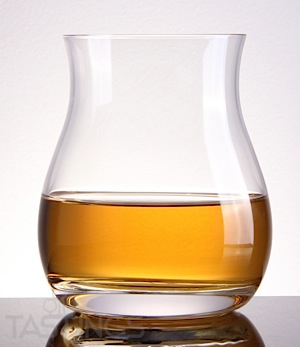
Serve in a Glencairn Ganadian Whisky Glass
Rye Whisky must contain a minimum of 51% rye grain, be distilled at less than 80% ABV (160 proof) and be aged for a minimum of two years in new charred barrels. A small amount of straight Rye whiskey is bottled and marketed, but most of the industry production is blended into other whiskies to give them additional character and structure. Canadians frequently refer to their whisky as "Rye," though it is in fact made primarily from corn or wheat.
The Taste: While the best Bourbon is known for a creamy, caramel-like palate, the best Rye whiskey makes its presence known with a spicy, grainy, hard-edged firmness that is distinctive and unique. Usually very dry, with notes of walnut, toasted grain, and black pepper, straight rye has a bold assertive character that has earned it a small but dedicated following among discerning whiskey fans.
The Scotch-Irish immigrant distillers had some exposure to using rye in whiskey production, but for their German immigrant neighbors rye had been the primary grain used in the production of Schnapps and Vodka back in northern Europe. They continued this distilling practice, particularly in Pennsylvania and Maryland, where Rye whiskey, with its distinctive hard-edged, grainy palate, remained the dominant whiskey type well into the 20th century.
Rye whiskey was even more adversely effected by National Prohibition than Bourbon. A generation of consumers weaned on light-bodied and relatively delicate white spirits turned away from the uncompromising, pungent, full-bodied straight Rye whiskies. Production of Rye whiskies had vanished altogether from its Mid-Atlantic homeland by the 1980s. A handful of modern Rye whiskies are currently being made by Bourbon distilleries in Kentucky and Indiana. America’s first indigenous whiskey style is today only barely surviving in the marketplace. Its primary use is for blending to give other whiskies more character and backbone, although a small but vocal group of Rye whisky enthusiasts continue to champion it.